-
Posts
3,173 -
Joined
-
Last visited
Content Type
Forums
Detector Prospector Home
Detector Database
Downloads
Posts posted by Jeff McClendon
-
-
I am very partial to anything from Poland after spending a lot of time there in the late 1970s. Owning a Rutus detector could be a possibility.
However, I prefer to do detector gold prospecting with detectors with at least a dedicated gold prospecting mode. Rutus Versa does not have one from the time I spent looking through the manual.
For me anyway, an SMF VLF detector needs to be able to easily hit a 0.01 gram or a bit smaller target through 1" of iron mineralized dirt in order for it to compete with the Equinox 800/900/Manticore/Legend.
None of the targets in your photos show anything that size and I have not heard any reports of the Versa being deliberately set up for detecting sub 0.1 gram targets.
-
2 hours ago, JCR said:
The Legend’s default AG is 1 in Gold Field, I assume that is what you were running.
Actually, I was using Audio Gain on 3 in Gold Field for the Legend. I like the updated threshold tone to just barely be audible using the stock Legend BT headphones. Leaving Audio Gain on 1, it is easy for my ears to lose the really weak responses. AG 3 lifts them out of the threshold tone nicely for me.
I use an Audio Response setting of 3 or 4 with Deus 2 FMF Goldfield for the same reason.
I wasn't sure how this testing would turn out. I had my suspicions but your assessment of these SMF/selectable single frequency detectors running in hot dirt using their multi frequency modes has been similar to mine. I really expected the ORX and Goldmonster 1000 to dominate on the smaller stuff. They didn't and especially the Legend, which for me is an upgraded Equinox 800, really stayed right with them and even beat them.
-
32 minutes ago, Ndplumr said:
Thank you. That is a pretty good report, and is full of information. Seems like the legend in Goldfield seemed to just squeeze out a win. But all in all the monster and xp in 74 kHz seem pretty comparable and hold their ground. It also showed me a good example of how the lower kHz machines suffer compared to the higher frequency machines. I probably should start using the search feature more, as I'm sure some of you are tired of the same questions being asked over and over. Thanks again. Your input is appreciated for sure.
It's a great question and hard to answer with a simple Yes or No.
Ground mineralization, ground moisture conditions and general size of the gold in the area dictate everything.
That is one thing that makes a selectable single frequency detector like the XP ORX so much fun. It is so adjustable, but it is handcuffed by coil selection. Same for the Gold Monster 1000 and even the Garrett Gold Master 24K since coil selection for those two is very limited and unlike the ORX, they are also stuck on one frequency which may or may not be the best frequency for the ground conditions and gold in the area. They also do not have the settings flexibility of the ORX. Being able to change the recovery speed settings, threshold settings and seriously micro manage the ground balancing of the ORX is really helpful. It will keep detecting in areas where the GM1000 and GM 24K have to really have their sensitivity levels reduced just to keep going.
I would definitely add the Nokta Gold Kruzer to your list especially if you need a waterproof dedicated gold prospecting VLF detector.
Deus 2 was handcuffed by its 9" coil in this test due to EMI and because it just isn't as sensitive as a smaller elliptical. It is a fantastic detector that is competitive even for gold prospecting and its Mono selectable single frequency mode works great and is highly adjustable.
The Legend really can do it all even at much lower sensitivity levels than the other detectors used. Like the Equinox 800 and 900, it also has a wide variety of available coils that can hit the small gold nugget bits and larger, deeper stuff too and those detectors are waterproof.
These newer gold prospecting capable SMF detectors really can do it all and have other great features too like fully functioning selectable single frequency operation, internal rechargeable lithium batteries, wireless Bluetooth audio and fantastic ergonomics. Most importantly, their simultaneous multi frequency technology simply handles tough ground conditions better than any dedicated gold prospecting single frequency VLF. It's a lot to think about and consider.
So, I would answer your question like this: those very famous dedicated gold prospecting detectors get the job done very well. So do these latest simultaneous multi frequency/selectable single frequency detectors.
-
On 2/9/2024 at 6:40 PM, Ndplumr said:
Are the gold specific vlf's(gold monster, gb2,gold kruzer,at gold etc) really any better than the smf detectors (legend, equinox 900 etc) with comparable coil sizes? Would love to hear pros and cons of each from people with experience with both.
For nugget shooting
Maybe this little report will help. Just click on it.
-
I see this question at least once every 3 months on this forum.
It goes something like this...." Are dedicated single frequency gold prospecting detectors better than the latest do everything simultaneous multi frequency detectors for gold prospecting?"
Maybe this bit of semi-real world testing will help some people.
I wish I had a wider selection of dedicated gold prospecting detectors, especially a Garrett/Whites Gold Master 24K and a Fisher GoldBug 2. I don't. I do have a Gold Monster 1000 (for a little while) and an XP ORX with 9.5 X 5" HF coil and its great gold prospecting modes that even have a live threshold.
So I tested those two detectors and used the XP ORX in 15.8 kHz to simulate several great 13 to 18 kHz detectors that have been used for gold prospecting including the Whites MXT, Fisher F75 and the Garrett AT Gold. I used the Nokta Legend in 20 kHz to simulate several 19 to 20 kHz detectors like the First Texas Gold Bug/F19/G2+/Time Ranger Pro series and the Nokta Multi Kruzer and Anfibio. I also used the Legend in 40 kHz, XP Deus 2 in Mono 45 kHz and the XP ORX in 74 kHz.
The XP Deus 2 and Nokta Legend were also tested using their simultaneous multi frequency gold prospecting modes. I consider the Equinox 800 and Legend to have almost identical gold prospecting performance. Equinox 900 is slightly better from my experience and Manticore with its 8" coil appears to be even better.
So, XP ORX with HF 9.5X5" elliptical coil, GM 1000 with 10X5" elliptical coil, XP Deus 2 with 9" round coil and Nokta Legend with 9.5X5" LG24 coil. I used the Nokta Legend stock headphones with wired connections for all detectors so that there would not be any variations in sound quality.
All detectors were noise canceled, ground balanced (the Gold Monster used has the updated Quick Track) and all were used in 1 tone VCO audio with absolutely no target IDs rejected. Deus 2 45 kHz Mono was set on -6.4 discrimination.
EMI was a problem so the single frequency detectors and selectable single frequency detectors were able to run higher sensitivity than the Legend using its SMF so keep that in mind when viewing the results. Plus I made a mistake recording the settings in the results below. The Legend using SMF Goldfield Multi had sensitivity on 23 of 30 not 25 as reported. It was fairly quiet at that 23 setting. I had to run Deus 2's SMF Goldfield at 95 just to compete and it was EMI noisy. I tried to run this test with the Manticore but I only had the stock 11" coil and EMI was unbearable.
I used a 0.05 gram nugget and a 0.15 gram nugget under 1" of moderately to highly iron mineralized Arizona gold field dirt. This dirt's magnetite mineralization almost filled up both the ORX and Deus 2 iron mineralization meters.
I used a 0.25 gram nugget under 3" of the same dirt.
I used a 5 gram USA modern nickel under 4" of the same dirt
Any depths reported beyond those were "air gap" depths swinging the coils a few to several inches above the top surface of the dirt.
Here are the results:
I wish I could have done this testing outdoors in the gold fields. Weather is definitely preventing that here in Colorado.
Thanks for looking.
-
Your situation, needing to not waste time recovering unwanted targets due to diving time restraints is very real.
Yes, Deus 2's roughly 35 to 82 (47 points) gold jewelry target ID range is large.
Manticore and Equinox 700/900 and I assume X-Terra Pro equivalent range is roughly 10 to 64 (54 points).
Nokta Legend equivalent range is roughly 13 to 42 (29 points).
Equinox 600/800 equivalent range is roughly 5 to 23 (18 points).
So, I cannot say which target ID system is better comparing target IDs being more spread out or compressed. All of the same issues apply as far as good and bad targets sharing the same target IDs in spread out and compressed systems. Not only do all zinc core USA pennies share the same target IDs as some large/high gold content gold rings, but at least where I detect, so do many "Bling" jewelry targets and small aluminum screw caps for 50 ml shot bottles.
For me, since these detectors don't have displayed target imaging, I lean first on the audio response qualities of the target itself and the target ID together to determine a dig/don't dig decision. I have dug many gold rings in the last 5 years since purchasing an Equinox 600. Several have had target IDs at the upper end of the low to mid conductor range with target IDs that were the same as a USA zinc penny. Every gold ring I have recovered in that time (77) has had very distinctive audio as in "I have to dig that target" except for one that had a fractured shank while using one of the detectors I mentioned above. I don't want to get into an argument with anyone about this distinctive audio. I will say that I work really hard with lots of practice on making sure that I really know what the most common gold target ID range targets tend to sound like and what their accompanying target ID tendencies are. I lean heavily on their audio response characteristics. But, I am detecting on land or at most with the coil and lower shaft submerged and I don't have to deal with problems associated with clearly hearing target responses when fully submerged.
Sorry I don't have any easy fix answers for you.
-
16 hours ago, afaitken said:
Hey Jeff, looks like you did well price-wise on the Axiom. The Axiom retails here in Australia at $7,385 or on sale at $7,185 which is not only way overpriced, but unfair that Garrett charges international buyers such a premium. It's the same for coils - so at $3kUSD you got a fantastic bargain! Also, there is a growing amount of us that are having endless problems with the Axioms not to mention faulty coils. I went out and got another Minelab GPZ 7000 yesterday as the Axiom has been nothing short of disappointing for the last 6 months, and useless for 90% of your prospecting day. We have collectively sent back our detectors "again" to Garrett Australia for testing. I personally wont ever use it again. The GPX 6000's are known for poor EMI shielding, but aftermarket modifications to fix the shielding and earthing removes those issues from the 6000. Also, more after market coils for the 6000 have been released and keep coming. Minelab applied a conductive coating to the inside of the GPX 6000 box but "forgot" to earth it back to the PCB properly amongst other things. One thing for sure, the Minelab range really is without competition. They were built and designed by people who live and breath gold prospecting, especially in the Australian environment. My plan is to strip back the 7000 and Frankenstein it into a lighter body and lighter battery. My research says it can be done, especially running the lighter X-coils....If the Axiom worked anywhere near as good as my wife's GPX 6000, I'd probably would never had got another GPZ 7000 - but they are such a good detector, you can't loose!
Around $5500 AUD would be a fair price for the Axiom.
That's twice as much as the E1500 and I am starting to wonder if the Axiom is twice as good.
One day the Axiom impresses me and the next day I take it to near the same location but add in some soil moisture and things get weird.
GPX 6000 costs $9,970 AUD here in the USA. I doubt the GPX 6000 is three to four times better than an E1500.
I had similar weird occurrences with the GPX 6000. My GPX 6000 got the EMI/speaker system "fix" by Minelab USA Repair and it helped.
I like and very often need to use a DD coil for EMI and ground conditions.
You said "Also, more after market coils for the 6000 have been released and keep coming." So far, all of those have been Mono coils. Which super intelligent group of people created a detector with 2 soil timings normal/difficult, three modes to use them- one mode for Mono coils and two modes Salt and Cancel for DD coils then only planned to release one 14" DD coil? So two thirds of the detector’s operating modes are basically useless due to that one ridiculous DD coil which Minelab says "is not recommended for general detecting" in its own "Coil Selection" GPX 6000 video......WHAT????
Basically, I feel ripped off by these two giants of the metal detecting industry more often than not.
I appreciate AlgoForce releasing a PI that will satisfy a lot of people's PI needs without it costing as much as a decent used car.
-
It weighs less than 4 lbs, it has a display that actually tells me something about the target like a target ID, I can easily see that display, it has easily accessible controls, it has inexpensive non-proprietary battery options, great coil selection, from all accounts so far it has good build quality and most of all, it appears to work just like the small amount of marketing information claimed it would.
What other PI, no matter what it costs, can do all of that???
-
2 hours ago, Steve Herschbach said:
Now you are singing my song Jeff. I almost never use a VLF. I just enjoy using a PI and doing old school hunt by ear detecting. I either dig it all, or if I am cherry picking I just dig what sounds good. And if you dig it all long enough, you do get a feel for what sounds good and what you can gamble in passing. If I nugget hunt I’m using a PI. If I beach hunt I use a PI. I even go to parks and coin hunt with a PI. I don’t relic hunt with a PI but that’s only because I don’t relic hunt. Yeah I dig junk but you VLF guys, are you trying to tell me you don’t? I know better. My main beef has been them being heavy expensive beasts but that’s changing. If I could only own one detector it would have to be a PI not a VLF.
AlgoForce is going to change PI forever by setting a bar for what can be had for $2000 just like Equinox changed VLF forever. It will take maybe ten more years but the day of the $4000 plus PI dinosaur is coming to an end. More and better $2000 PI detectors will come to market and mark my words, someday we will have GPZ class performance for $2000.
For nugget hunting I am totally with you. The VLF comes out at the end or if I am looking for a new shallow patch on good ground.
For coin/jewerly hunting on turf in dense aluminum (which is what I do most of the time) I am using a really good SMF VLF.
For coin/jewerly hunting fresh and saltwater beaches I will use either depending on if me and the detector will be getting wet or not.
For relic hunting in wide open sparse target areas a lightweight PI is just fine with me.
For relic hunting in dense iron....VLF currently.
-
6 minutes ago, Ndplumr said:
One piece of Steve Herschbach's advice I remember well is "use a vlf until you can't anymore
I used to be in the "use a PI until I can't lift it to swing it anymore" camp and then use a VLF.
These latest PIs like the GPX 6000, Garrett Axiom and now the E1500 are making the need for a VLF at least for me, less and less. The last few times I hunted, the VLF basically stayed in my backpack. These lightweight PIs are just too much fun.
-
With the 13” coil, I can see why running reactivity at 2 might help…….bigger coil surface plus salt/iron mineralization is begging for higher reactivity. If that enables you to raise sensitivity then it cancels out the depth lost from raising reactivity.
Salt sensitivity at 3 sounds crazy since it is another depth killer.
I know you are allergic to ground grab ground balancing the Equinox and prefer to run in tracking for good reason.
I also understand that you set discrim on Deus 2 above 20???
Have you tried ground grab ground balancing Deus 2? The key to it is to start gently pumping the coil before pressing the pinpoint button especially with a big coil like the 11 or 13X11”. Tom D. never got that nuanced technique from reading his Deus 2 blog.
I have never liked the tracking ground balance much on Deus 2.
Equinox 800 running tracking ground balance seems to work well for you Dave on the wet sand to surf transition.
-
Thanks Simon!!!!!
What a nice looking and sounding PI.
Looks like you could swing it with one finger and thumb and with a loose grip.
How is the USB battery connection and battery consumption.
It seemed to have no problems hitting a couple of those NZ flakes that appeared to be 0.03 grams or smaller.
Awesome.
-
Yes, only certain PIs with the right coils are going to hit 13 to 18" 3 to 5 gram targets whether the soil is mild or mineralized from my experience.
Not disturbing the soil very much when conducting the testing really helps too. I am lucky that I have that nice erosion cut for testing that is within 10 miles of my home and EMI is reasonable most of the time for PI and high gain SMF VLF detectors.
It is not as good as inert sand but it gives me some fairly realistic results give or take an inch to 3 cm.
The latest simultaneous multi frequency VLFs with very little filtering can easily hit 10" 3 to 5 gram targets at this site and even have good IDs using 11" coils. They can go a bit deeper but IDs are unpredictable.
-
49 minutes ago, Doc said:
The warbling threshold is weird. In my area if I have a warbling threshold it would be because of EMI. I never had that issue with the SDC2300. I did find a lot of small gold with it, and like I said I was amazed at how immune it was to mineralized ground. While generally the ground here is pretty mild there are a couple of spots that I have never been able to run a detector in, and the SDC2300 paid no attention to the severe conditions and found gold.
I just wonder if you had a funky SDC2300?
DocSome PIs handle 0.1 gram to 1 pound sized magnetite chunks scattered all over and in the ground better than others. The SDC 2300 and even the GPX 6000 go off on them big time. Throw in rocks from the Mantle and alkaline conditions…….maybe you get the picture. Turning down sensitivity enough to semi stabilize them neutered them to the point that a GPX 4000 to 5000 or a good VLF did just as well or better on small gold.
Running the E1500 at these sites might be fun
I never had any ground mineralization problems running those PIs in Arizona.
-
6 minutes ago, Gold Catcher said:
I never rely on the auto track for longer periods of time and do a quick GB fairly often (sometimes every 5min) if the ground is very inhomogeneous. Never had a problem with it.
I had to use the quick GB button a lot more often than every five minutes.
-
24 minutes ago, Gold Catcher said:
Spot on Doc. I do want to remind all that the SDC was made for a very specific purpose, namely to outperform VLFs in highly mineralized soil on shallow fast gold. The MPF timings were made exactly for this purpose, and the 8 inch round is the ideal combination partner. I don't know about the AlgoForce timings, but the SDC MPF gives this machine a distinct advantage over others in my fleet, specifically for these situations. I still love my SDC. Yes, clunky, perhaps outdated, ergonomically a 0 out of 100, but what a beast! Also, extremely robust and can tolerate beatings without any problems. Still made with the old fashion ML high quality/reliable construction (wish it would come back...). The battery issue never bothered me as it was a simple fix. Overall, the best option for me for small washes with shallow gold in the Sierra Nevada and the Mojave desert.
GC
I am just going to speak for me and not "all".
I mentioned the warbling threshold on the SDC 2300. That threshold warbled on every audible setting because the SDC's tracking ground balance system was incapable of keeping up with the high mineralization at the sites I was often detecting. I only had to drive 300 miles round trip to Colorado and Wyoming sites (with lousy mineralization) instead of 1600 miles round trip to get to areas in Arizona where the actual ground mineralization (not the hot rocks) are significantly milder.
The Goldmonster 1000 also had similar issues with it tracking ground balance system at these sites closer to where I live. So, at least for me, these two tracking ground balance detectors failed to live up to Minelab's claims of one size fits all ground conditions. The SDC2300 was outperformed at these sites by any dual channel ground balance PI that could do a ground grab ground balance. The GM 1000 met the same fate. An XP ORX, Equinox 800 and Goldmaster 24K found lots more gold for me at these sites simply because I could be in control of their ground balancing.
-
1 hour ago, Doc said:
Hard to find anything that beats the SDC2300 as far as being immune to hot ground. However keep in mind I am in the U.S. our ground is not as harsh. However, I do have spots where the GPX 5000 would scream and the SDC2300 would purr. Very simple machine to use. My big gripe was that dinky coil. Can you think of the number of times you have to swing an 8 inch compared to a 14 inch. Makes my arm sore just thinking about it.
DocMy biggest gripe with the SDC 2300 was the weight and the threshold warble. Even using your products, I just couldn't get comfortable swinging that detector for long unless the terrain was flat and vegetation was sparse. Otherwise, I just wanted to jettison that detector as quickly as possible especially on high altitude, boulder strewn hillsides full of trees and shrubs. That threshold drove me nuts and there were not enough threshold setting levels.
-
1 hour ago, araratgold said:
One thing that stood out for me is that the SDC easily beat it on all targets with the 14x9 Coiltek vs 12 evo, and the 6000 with its standard 11 inch smashed it for depth. The SDC does have another advantage, that is automatic ground tracking, and also has exceptional handling of mineralisation.
Will be interesting to see how the AlgoForce E1500 goes with bigger coils, in real ground conditions.
Interesting too in this test is just how poorly the QED did !
RickSDC 2300 is set on Max sensitivity. GPX 6000 is also set to A+ or Max in Normal. E1500 is not. E1500 using the 12" Evo is in Fine mode. I would have used it in Normal for maximum depth on larger targets. Just little things but they could make a difference.
Like I said earlier, I absolutely don't care how it compares to the GPX 6000 especially on deeper targets. I do care how it compares to the SDC 2300 on any target.
-
9 hours ago, RONS DETECTORS MINELAB said:
There’s another report on the Aussie forum describing how well the conductivity target ID is working on this E1500 PI. Also mentioned is some comparisons of different detectors on a range of targets.
here is the most recent Australian report:
-
On 2/3/2024 at 3:59 PM, Gold Catcher said:
ML will remain the tech leader for now, and it might not be fair to compare a $1500 detector with their flagship gold machines. Rather, the AlgoForce will be a great low-cost entry PI with reasonable performance, but with huge added benefit of "coil freedom". So, a standalone detector on its own rights. More interesting will be what is coming next. However, it will be a tall order to meet/beat the performance of the 6k and 7k, but they could be up for it eventually. But for now, Bruce Candy is still winning when it comes to cutting edge performance (from all that is reported thus far), albeit it comes at its price. 🙂
GC
For me, the only performance the AF E1500 has to compete with match or beat is the SDC2300.
It totally beats it for coil selection, having a display and good settings adjustments and most of all ergonomics and price.
Anything more than that is definitely icing on the cake.
The SDC2300 has it beaten for being waterproof. Maybe AlgoForce will take the next mythical step and waterproof the E1500 into an All Terrain version.
Comparing it to a 5000 to 8000 US dollar detector as far as overall performance is way beyond its scope in my opinion.
Using the appropriate coils, if it can easily detect 0.03 gram flakes or even smaller and also hit a 5 gram US nickel at 18 to 20" and maybe even identify it with a conductivity target ID.......I will be impressed.
-
Some of the audio characteristics as far as sharpness and clarity differences between the Axiom and GPX 4000 may come down to the wireless headphones being used in both the small and larger target tests.
I am using a set of Quest wireless headphones and transmitter with the GPX 4000.
I am using the Garrett MS-3 Z-Lynk wireless headphones with the Axiom.
I don't care too much for the MS-3 Z-Lynk sound quality and that may also be slightly skewing the audio results in these two tests.
-
It thawed out enough today to do a much deeper test in a semi frozen freshwater beach erosion cut using the Axiom with 13X11" Mono coil, GPX 4000 with Coiltek Elite 14X9" Camo Mono and Deus 2 9" DD coil.
I wanted to see if the pulse induction Axiom and GPX 4000 using similar settings and similar sized coils had similar performance. This is important to me since the Axiom is the new detector on the block and it sure is a joy to operate and swing. No worrying about craning my neck to see the GPX front and back panels, worrying if I have accidentally bumped a toggle switch and in the case of the 4000 with no backlight.....trying to see what the display says and then getting strapped in for the ride. None of that is necessary with the Axiom. All the controls are right in front of me to easily see and manipulate and the ergonomics are off the chart good. But how is its performance on deep coins and is that transferrable to deeper jewelry, relics and deeper gold nuggets?
Deus 2 once again, was along for the ride. It did great giving an iron mineralization reading and for checking the test area for any obvious targets and clearing them out. So, I ran it through the test knowing full well that it was way out of its league due to its 9" coil and it being a VLF.
The test was on a 0.5 gram Liberian 24K gold coin, a 5 gram US nickel and a 5.75 gram US quarter (a high conductive target)
I dug three notches about 2" into the cut that these targets could easily fit into. I made one notch at 9" from the surface/swing area, a second notch at 13" and the deepest notch at 18". The Fisher F-Pulse pinpointer in the photo is 9" long.
iron mineralization again was pretty high using the Deus 2's iron mineralization meter (lower left display bar graph). You can actually see the black sand on the surface of this beach and in some of the photos.
I started with the Axiom using its 13X11" mono coil using the Normal timing/Slow speed with sensitivity on 3 as 4 was just a little unstable for the EMI and ground conditions. Ground balanced easily and stayed fixed. Threshold was just audible.
I tested the 0.5 gram gold coin at 9" depth. The Axiom with 13X11" coil had no problem giving a text book high/low fairly sharp audio response on all sweeps. It wasn't loud, but it was easily a no doubt Dig Me type signal for me. Raising the coil an inch or so and the target response became very iffy.
Next I tested the 5 gram US nickel at 13" depth. The Axiom responded with a solid, sharp, text book high/low response on all sweeps. Again, these responses were not loud, but they were very obvious, no doubt responses.
I moved the 5 gram US nickel to the 18" notch. The Axiom responded with a smooth, broad, one way low/high response swinging from right to left. The response swinging from left to right was much shorter and mostly a higher tone. I could have mistaken this response for shallow ground noise, but since it was very repeatable I probably would have dug that target.
The US quarter at 18" had a similar but fainter response. Digging that target........maybe.
I then did the same tests with the GPX 4000 running in Normal/General/Slow with gain on 10 and with the threshold barely audible. The Coiltek Elite 14X9" Mono coil was very quiet after doing a frequency scan and ground balanced easily and stayed that way throughout the testing.
The 9" deep 0.5 gram gold coin sounded sharper on the GPX. The response was high/low as expected but it was a bit more clearly defined and obvious than on the Axiom. Digging that response all day. Raising the coil about 1" resulted in a very iffy response.
The 13" deep 5 gram US nickel also sounded a bit sharper and clearer than the Axiom, but the overall high/low response actually seemed to have less volume/signal strength.
The nickel at 18" did not have a broad response like the Axiom. It was very short and faint, but clearly something under the coil. Much softer response than the Axiom.
The 5.7 gram US quarter had a similar response at 18" with just a quick rising tone above the threshold.
Deus 2 using its 9" coil running FMF Goldfield, no Disc IAR, sensitivity 95, reactivity 2, audio response 4 could barely hit the 9" deep 0.5 gram gold coin and I mean barely. Without headphones, I would not have heard that response or even looked at the display for a possible target iD. Understandably, it could not hit any of the deeper targets. No mode could hit them. I expected that so no surprise.
Once again, the Axiom really held its own against a fine pulse induction detector like the GPX 4000 setup similarly.
-
45 minutes ago, EL NINO77 said:
Jeef..have you tried increasing the IAR disk in the gold program in Deus 2?..from 0 to 1,2,3 and with what results?. on nuggets and from the results on coins...
The mineralization meter on the Deus 2 indicates... that even a VLF detector can be reasonably successful here..But I also believe that PI detectors Axiom and GPX 5000...are simply better here and have a better depth reserve ...
Thanks for this test and comparison.👍....but like others, I'm also looking forward to your next in-depth detector test in this field...

I use Deus 2 and ORX for very small nugget gold prospecting. Using any kind of iron discrimination on sub 0.1 gram gold targets is "iffy" at best and can result in masking or in turning small gold nugget boderline non-ferrous responses into ferrous responses more easily depending on the level of ground mineralization and depth.
Disc IAR works really well for larger non-ferrous targets, especially those that are not low conductors that have target IDs close to the ferrous range of target IDs. I often will use my Deus 2 in Goldfield or ORX in one of its Gold modes with Disc IAR set fairly high and iron volume on when I am hunting for mid to high conductor coins/relics in surface to 8" deep iron/nail infested older sites.
-
The Garrett Apex is not waterproof and its simultaneous multi frequency technology is not on the same level as the Nokta, XP and Minelab SMFs.
For your price range your choices are the Nokta Double Score, Nokta Legend, Quest V60, Quest V80 and the Equinox 700. All are fully waterproof, have good European support and are good choices for your budget.
The Minelab X-Terra Pro is a decent detector for saltwater beaches and snorkeling according to some reports on this forum and the price is definitely right but target IDs will not be as accurate on deeper targets compared to the other detectors listed because they have simultaneous multi frequency operation and the XT Pro does not.
Midalake is a full-time moderately iron mineralized saltwater beach hunter. He knows what detectors work well for him.
I am not a full-time saltwater beach hunter. I have used the Nokta Legend and the Equinox 700/900 at saltwater beaches. They did just fine for someone like me that just wanted to do some occasional beach detecting. I have also owned two different Quest detectors and I was very impressed with them.



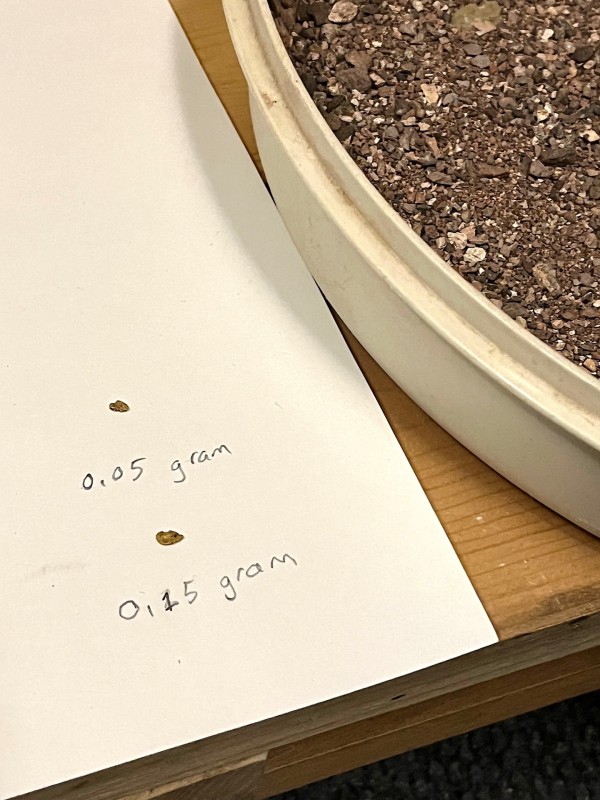
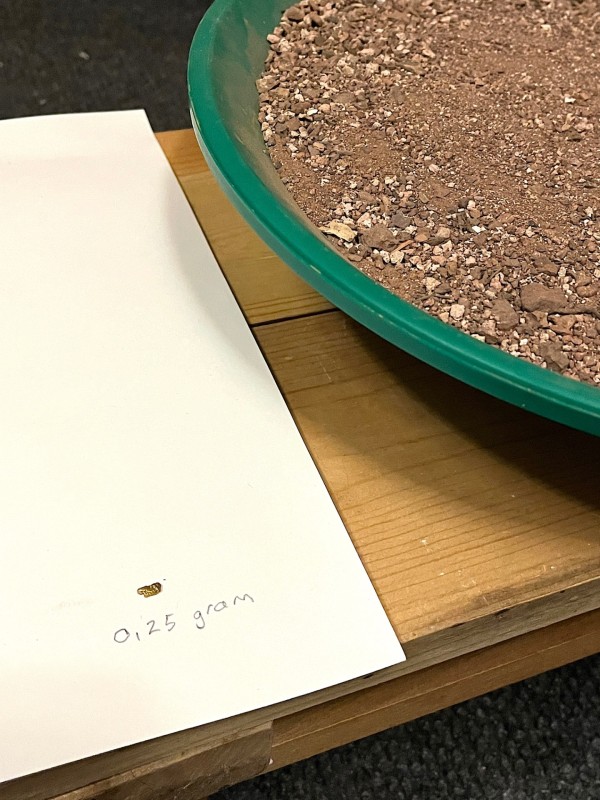
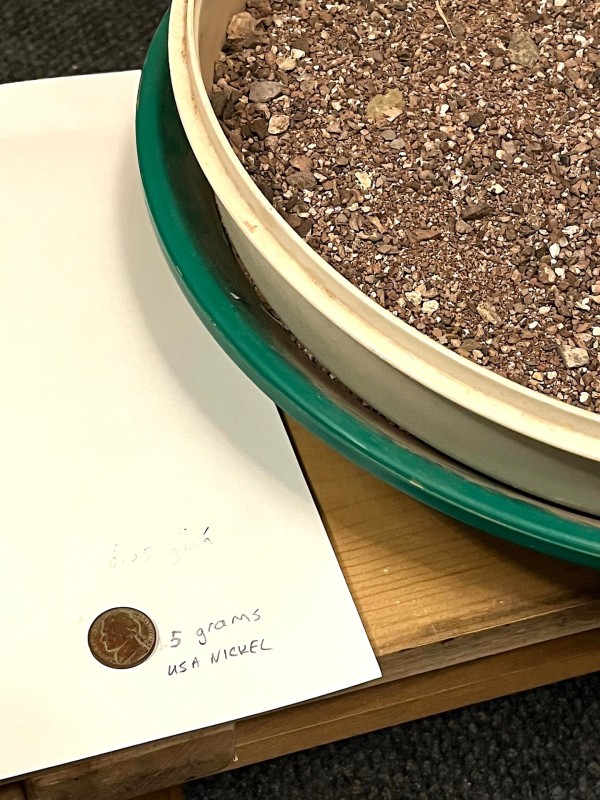
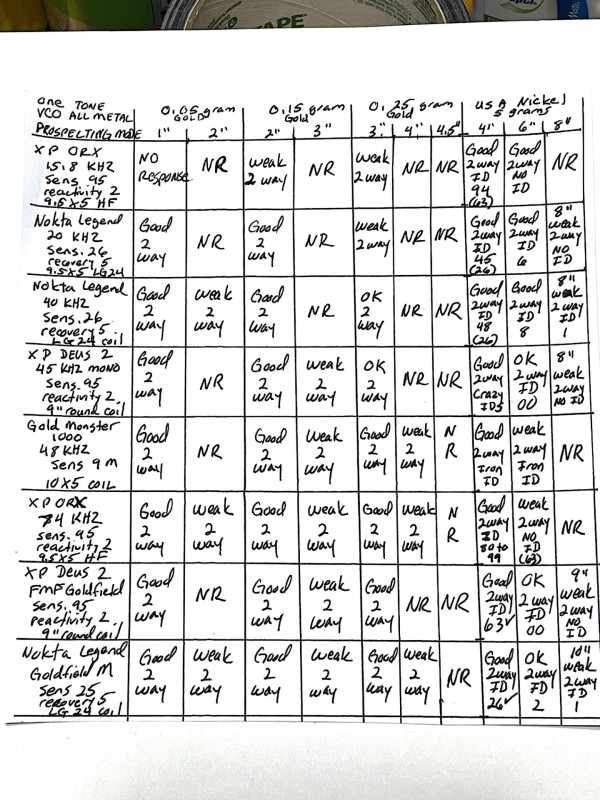
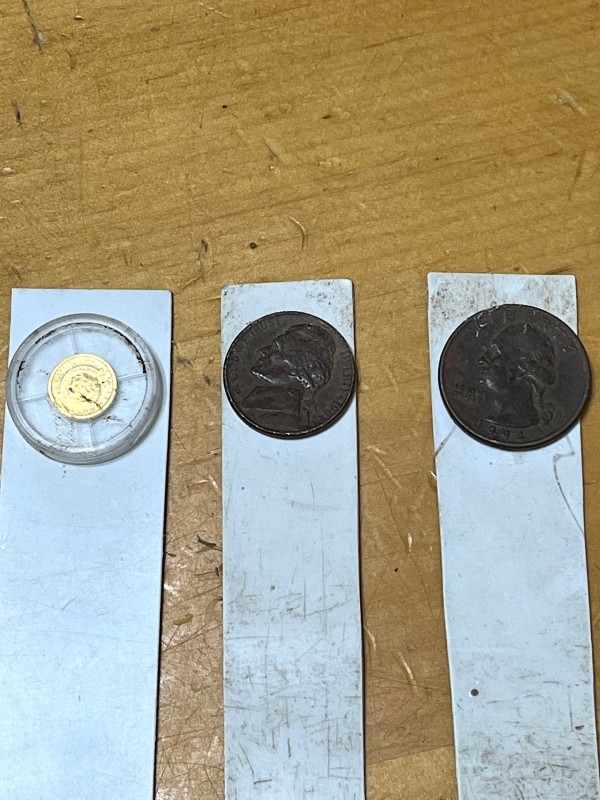
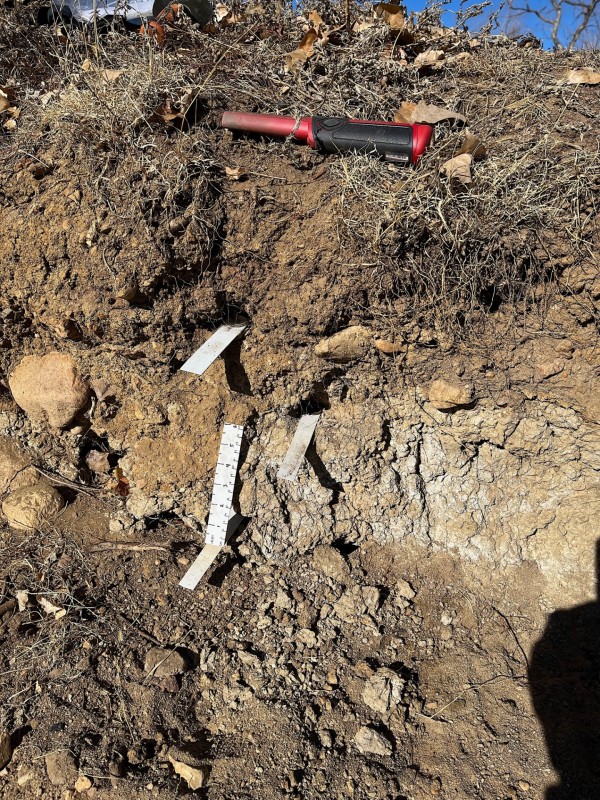
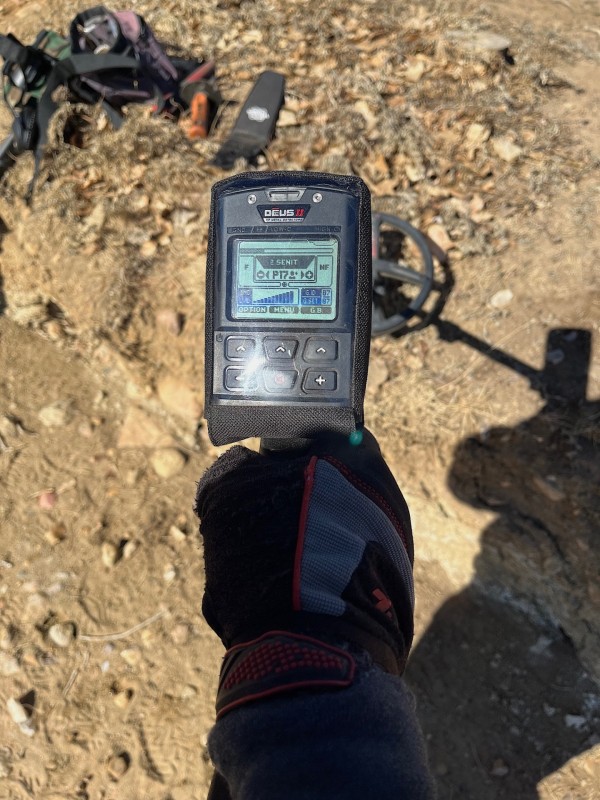
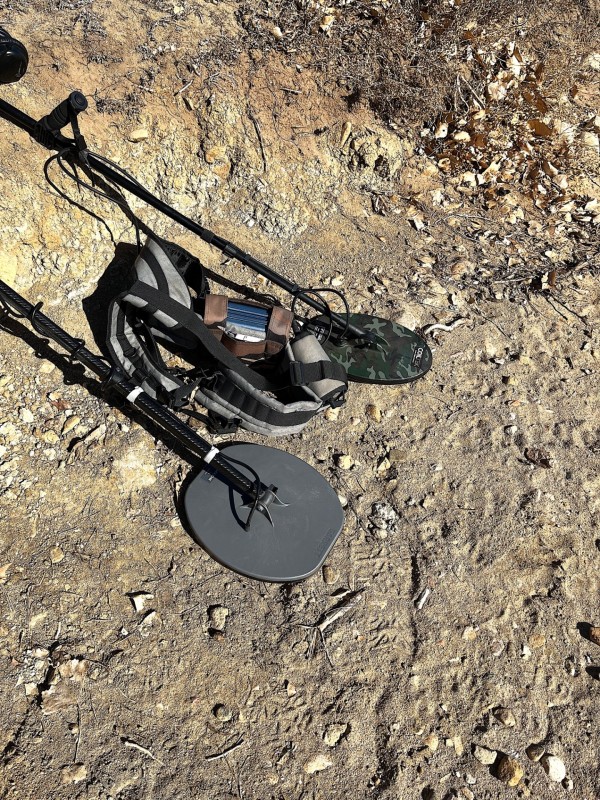
Issues With Axiom & GPX 6000
in Metal Detector Advice & Comparisons
Posted
I gave up on the GPX 6000 and no longer own one and I won't be revisiting that detector. For the places I detect, it simply is not the best choice. The Axiom actually handles the USA magnetite laced ground and the EMI we have here where I most often detect, better than the 6000. I still don't care for the Axiom DD coils and find them more picky about ground balancing than the Mono coils.
I watch Woody's videos a lot. Very informative.
No, I won't be sending him a GPX 6000 to modify or an Axiom for that matter. I would definitely watch a Woody/Axiom tear down video and testing videos too.
That perfect for me and my needs PI still has not reached my hands yet. To be perfect, I need to be able to afford it and swing it all day without needing surgery afterwards. The Axiom has come the closest for me so far with the real GPX series (not the 6000) being close behind.
When the E1500 gets to the USA, I will definitely try one.
Hope you get your Axioms fixed.